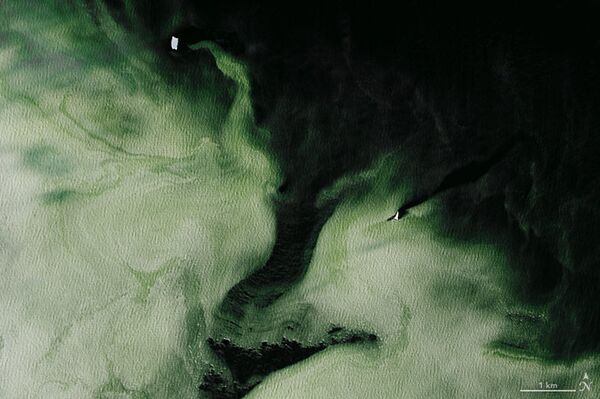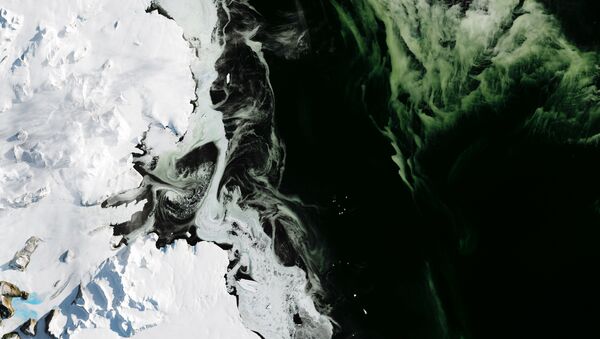The colorful ice is located at Granite Harbor in southern Antarctica, and spans a 16-mile (26 km) stretch. The pale green hue comes from wisps of algae trapped under a layer of slushy sea ice.
Marine glaciologist Jan Lieser with Australia's Antarctic Climate and Ecosystems Cooperative Research Center explained that the "green color is caused by phytoplankton at the water's surface that have discolored the sea ice."

"These microscopic marine plants, also called microalgae, typically flourish in the waters around Antarctica in the austral spring and summer [autumn and winter in the Northern Hemisphere], when the edge of the sea ice recedes and there is ample sunlight. But scientists have noticed that given the right conditions, they can grow in autumn too [the Northern Hemisphere's spring]."
A similar phenomenon was observed by Lieser's team in East Antarctica in 2012, and NASA observed phytoplankton in Terra Nova Bay, not far from Granite Harbor, in 2015 and 2017.
With the right set of circumstances in terms of sunlight, wind, sea ice, predation and food sources, plankton populations can grow at incredible speed. The algae has reproduced so quickly that the OLI spectroscope can see it from its orbit 436 miles over Earth, which has shocked marine biologists.

The OLI is attached to Landsat 8, NASA and the US Geographical Survey's 2013 Earth observation satellite.
"In early 2017, there was not much ice anchored to the shoreline [called fast ice], a condition that is thought to help 'seed' phytoplankton growth. But offshore winds and sunlight favorable for growth made conditions similar to previous years that supported blooms, according to Lieser," said NASA in a statement.
An expedition to Granite Harbor to further investigate the algae is planned for April 2017.



